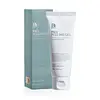What's inside
What's inside
 Key Ingredients
Key Ingredients

 Benefits
Benefits

 Concerns
Concerns

No concerns
 Ingredients Side-by-side
Ingredients Side-by-side

Water
Skin ConditioningCellulose
AbsorbentPentylene Glycol
Skin ConditioningCoco-Caprylate/Caprate
EmollientGlycerin
HumectantAmmonium Acryloyldimethyltaurate/Vp Copolymer
Chrysanthemum Sinense Flower Extract
CleansingCeramide NP
Skin ConditioningSodium Hyaluronate
HumectantDipotassium Glycyrrhizate
HumectantLactobionic Acid
BufferingAllantoin
Skin ConditioningPropanediol
SolventCaprylic/Capric Triglyceride
MaskingHydrogenated Lecithin
EmulsifyingPhytosteryl/Octyldodecyl Lauroyl Glutamate
Skin ConditioningSodium Gluconate
Skin ConditioningEthylhexylglycerin
Skin ConditioningWater, Cellulose, Pentylene Glycol, Coco-Caprylate/Caprate, Glycerin, Ammonium Acryloyldimethyltaurate/Vp Copolymer, Chrysanthemum Sinense Flower Extract, Ceramide NP, Sodium Hyaluronate, Dipotassium Glycyrrhizate, Lactobionic Acid, Allantoin, Propanediol, Caprylic/Capric Triglyceride, Hydrogenated Lecithin, Phytosteryl/Octyldodecyl Lauroyl Glutamate, Sodium Gluconate, Ethylhexylglycerin
Water
Skin ConditioningCellulose
AbsorbentGlycerin
HumectantLinum Usitatissimum Seed Extract
PerfumingChondrus Crispus Extract
Skin ConditioningSaccharum Officinarum Extract
MoisturisingDipropylene Glycol
HumectantPolysorbate 20
EmulsifyingPhenoxyethanol
PreservativeCarbomer
Emulsion StabilisingTromethamine
BufferingCaprylyl Glycol
EmollientParfum
MaskingDisodium EDTA
Lactobionic Acid
Buffering1,2-Hexanediol
Skin ConditioningCaprylic/Capric Triglyceride
MaskingHydrogenated Lecithin
EmulsifyingAloe Barbadensis Leaf Polysaccharides
EmollientCeramide NP
Skin ConditioningCitrus Limon Fruit Extract
MaskingVinegar
Butylene Glycol
HumectantCarica Papaya Fruit Extract
Skin ConditioningWater, Cellulose, Glycerin, Linum Usitatissimum Seed Extract, Chondrus Crispus Extract, Saccharum Officinarum Extract, Dipropylene Glycol, Polysorbate 20, Phenoxyethanol, Carbomer, Tromethamine, Caprylyl Glycol, Parfum, Disodium EDTA, Lactobionic Acid, 1,2-Hexanediol, Caprylic/Capric Triglyceride, Hydrogenated Lecithin, Aloe Barbadensis Leaf Polysaccharides, Ceramide NP, Citrus Limon Fruit Extract, Vinegar, Butylene Glycol, Carica Papaya Fruit Extract
 Reviews
Reviews

Ingredients Explained
These ingredients are found in both products.
Ingredients higher up in an ingredient list are typically present in a larger amount.
This ingredient is an emollient, solvent, and texture enhancer. It is considered a skin-softener by helping the skin prevent moisture loss.
It helps thicken a product's formula and makes it easier to spread by dissolving clumping compounds.
Caprylic Triglyceride is made by combining glycerin with coconut oil, forming a clear liquid.
While there is an assumption Caprylic Triglyceride can clog pores due to it being derived from coconut oil, there is no research supporting this.
Learn more about Caprylic/Capric TriglycerideCellulose is the main component of plant cell walls. It is used as an emulsifier, absorbent, and texture enhancer.
This ingredient has many functions:
Fun fact: Cellulose is the most abundant form of organic polymer on Earth.
Learn more about CelluloseCeramide NP is a type of ceramide.
Ceramides are intercellular lipids naturally found in our skin that bonds dead skin cells together to create a barrier. They are known for their ability to hold water and thus are a great ingredient for dry skin.
Ceramides are an important building block for our skin barrier. A stronger barrier helps the skin look more firm and hydrated. By bolstering the skin ceramides act as a barrier against irritating ingredients. This can help with inflammation as well.
If you would like to eat ceramides, sweet potatoes contain a small amount.
Read more about other common types of ceramides here:
Ceramide AP
Ceramide EOP
Glycerin is already naturally found in your skin. It helps moisturize and protect your skin.
A study from 2016 found glycerin to be more effective as a humectant than AHAs and hyaluronic acid.
As a humectant, it helps the skin stay hydrated by pulling moisture to your skin. The low molecular weight of glycerin allows it to pull moisture into the deeper layers of your skin.
Hydrated skin improves your skin barrier; Your skin barrier helps protect against irritants and bacteria.
Glycerin has also been found to have antimicrobial and antiviral properties. Due to these properties, glycerin is often used in wound and burn treatments.
In cosmetics, glycerin is usually derived from plants such as soybean or palm. However, it can also be sourced from animals, such as tallow or animal fat.
This ingredient is organic, colorless, odorless, and non-toxic.
Glycerin is the name for this ingredient in American English. British English uses Glycerol/Glycerine.
Learn more about GlycerinHydrogenated Lecithin is created from the hydrogenation of lecithin (a group of phospholipids). Hydrogenation is a chemical reaction between hydrogen and another element.
This ingredient is an emollient and emulsifier. As an emollient, it helps soften skin by trapping moisture within. As an emulsifier, it prevents oil and water ingredients from separating.
Lactobionic Acid is a PHA. PHAs are the gentle cousins to AHAS.
Like AHAs, they exfoliate the top layer of skin. Lactobionic acid also exhibits significant antioxidant activity.
PHAs are more gentle than AHAs due to their larger structure. This means they do not penetrate as deeply as AHAs and take a longer time to dissolve dead cells. Studies show PHAs do not cause as much irritation.
By removing dead skin cells, PHAs leave the skin brighter and with even-texture.
Learn more about Lactobionic AcidWater. It's the most common cosmetic ingredient of all. You'll usually see it at the top of ingredient lists, meaning that it makes up the largest part of the product.
So why is it so popular? Water most often acts as a solvent - this means that it helps dissolve other ingredients into the formulation.
You'll also recognize water as that liquid we all need to stay alive. If you see this, drink a glass of water. Stay hydrated!
Learn more about Water